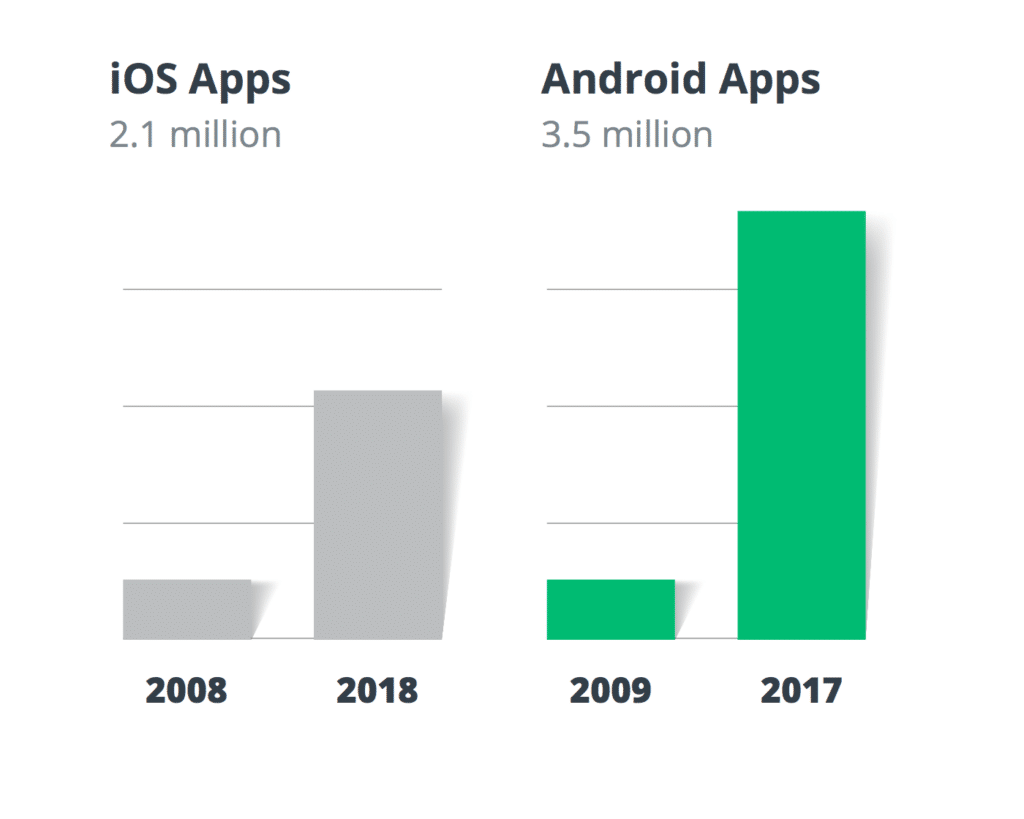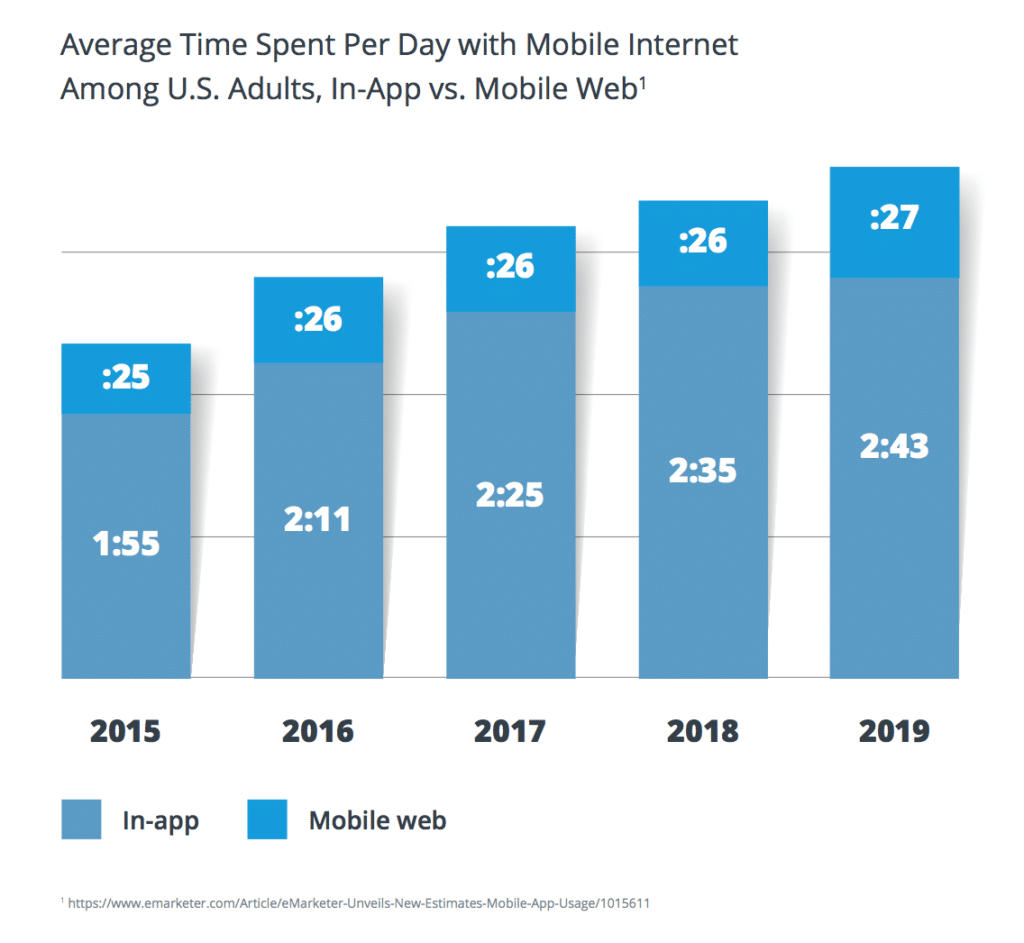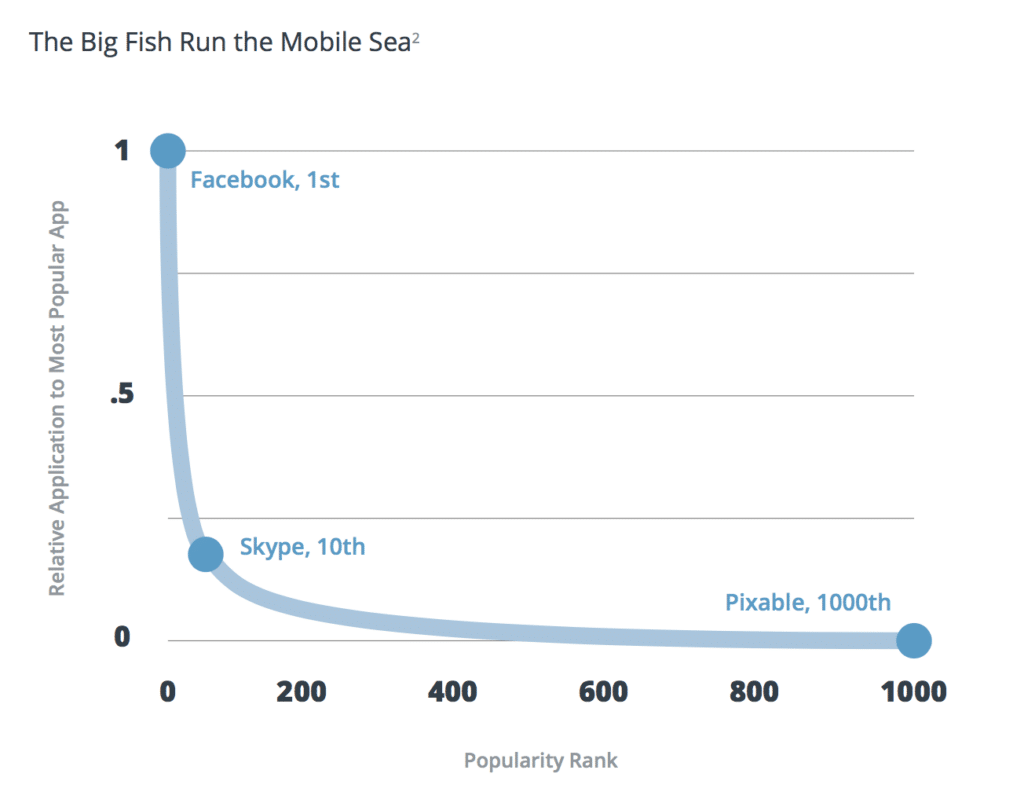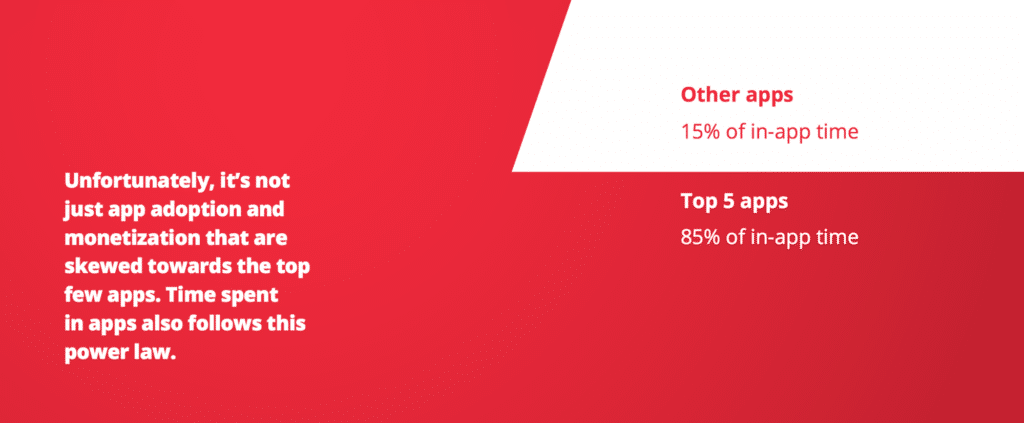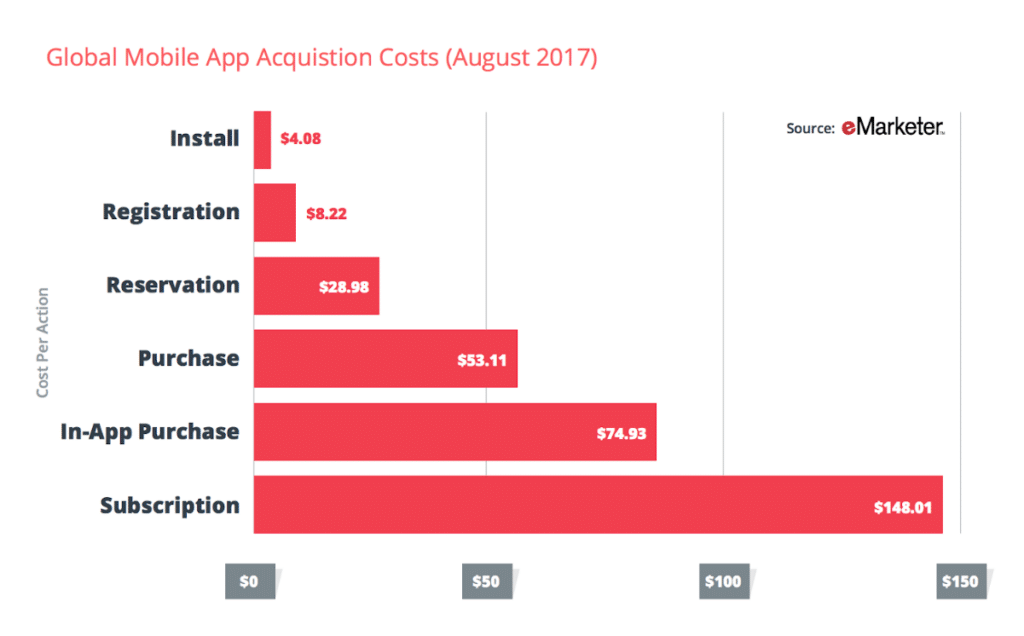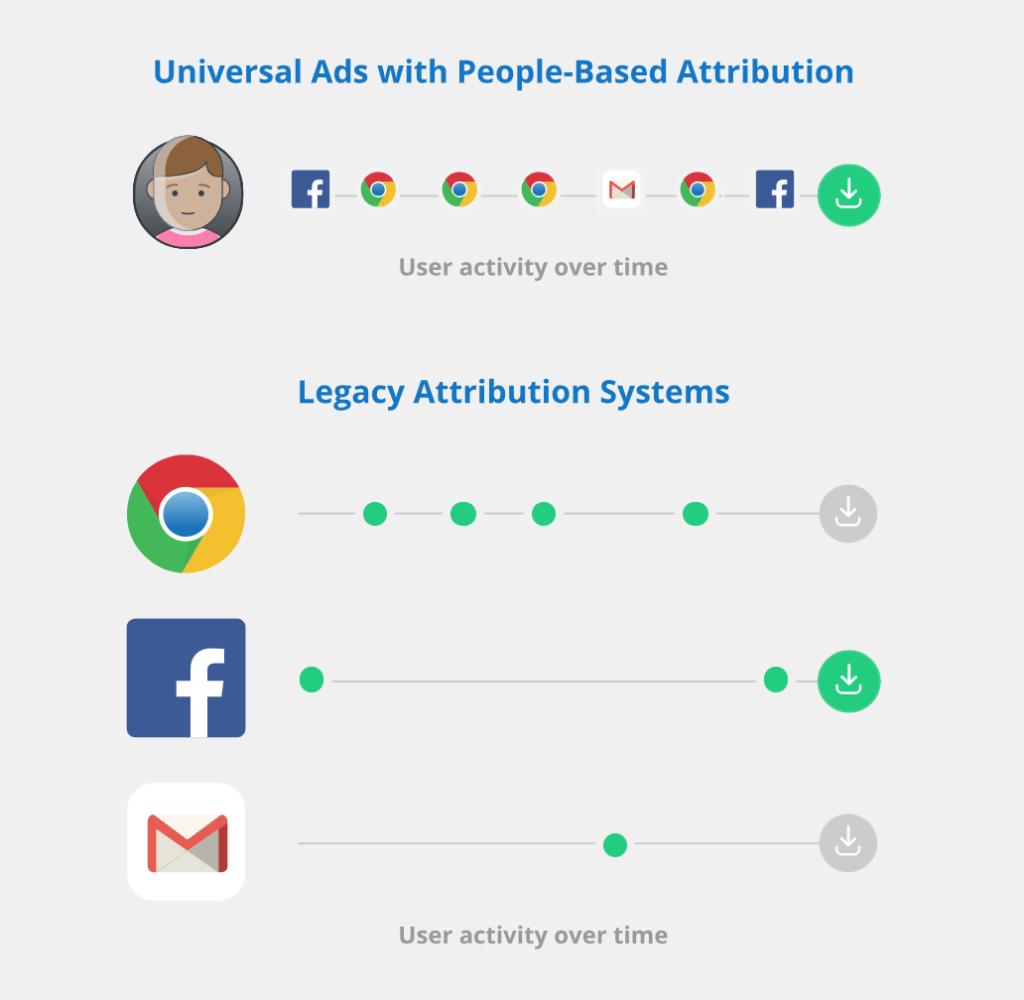2018 marks the ten-year anniversary for both the Apple App Store and Android Market, and both are growing faster than ever.
Specifically, App Annie predicts that consumer app store spend will surpass $110 billion this year, a YoY growth rate of 30%. App Annie also reports that, while games account for 80% of total consumer spend in app stores, non-gaming apps are currently growing at a higher rate than gaming apps.
In a world with so many approaches to mobile user acquisition, activation, engagement, retention, referral, and attribution, it’s worthwhile to take a closer look at best practices and optimization. The following report highlights the app store and mobile usage statistics marketers will need to craft informed strategies and outgrow the competition. It also introduces the role of attribution technology as vital to app success.
The Apple App Store and Google Play Store have simultaneously upped the quantity and quality of apps.
In recent years, Apple introduced new standards to improve the quality of the apps available in the App Store and removed apps that are no longer compatible with new versions of iOS, apps that copy other apps, and apps that aren’t needed on the iPhone, such as antivirus apps.
Even despite the dramatic increase in standards that Apple has imposed on app developers, both the Apple App Store and the Google Play Store have seen their quantities of apps multiply.
Mobile app usage around the world is on the rise—but not equally.
App Annie reports that China, India, and Brazil are the top markets to watch. China’s mobile growth rate has significantly outpaced the rest of the world’s, and is expected to continue to do so. India and Brazil, meanwhile, experienced 50% and 30% growth rates, respectively, in 2017.
Statista predicts that annual mobile app downloads in APAC will more than double, rising to approximately 180 billion by 2021. Downloads in the Americas are also predicted to skyrocket—Statista predicts that mobile app downloads in the Americas will nearly double from 2017’s download count of approximately 40 billion downloads, to approximately 75 billion downloads by 2021.
Mobile in-app time continues to increase, while time spent in the mobile web has remained stagnant.
According to data collected by eMarketer, the in-app share of U.S. mobile time has continued to increase, while time in the mobile web has maintained stagnant. Predictions indicate in-app mobile experiences will continue to claim an ever-expanding portion of mobile screen time.
This isn’t surprising – after all, users prefer spending time in-app (where they’re logged in and theoretically ready to convert), rather than spending time in mobile web experiences. For enterprise and long-tail apps alike, the path to mobile growth has required marketers to optimize the journey from multiple channels into their apps (through incorporating deep linking into smart banners, emails, referral infrastructures, social media posts, and more).
Comparing mobile vs. desktop reveals the strength of mobile growth.
As Stone Temple reports, mobile is gaining traction in terms of both visits and page views, while time spent on site, bounce rate, and page views per visit among mobile visitors are catching up quickly to those of desktop users.
In fact, Stone Temple reveals a 30% increase in total page views on mobile in the United States among 2016 and 2017 mobile users. This is of particular note because for the first time, 2017 saw more page views in the U.S. on mobile (53% overall) than on desktop (47%).

The App Store Power Law is more relevant than ever—app ranking is everything.
Perhaps the largest barrier to mobile app growth in 2018 is the power law in the App Store and the Google Play Store. As Alex Austin, co-founder and CEO of Branch, says, “App adoption and monetization are heavily skewed towards the top few apps. It’s nowhere near 80/20. In fact, let’s call it the App Store 99/0.01 rule.”
To beat the App Store Power Law, apps that aren’t the most dominantly positioned in their competitor set should identify and leverage strategic ways of generating app installs and triggering virality that don’t rely on the App Store. (For example, check out our guides on how to drive mobile app installs from the mobile web and how to master personalized referrals.)
At the same time, app ranking isn’t likely to go anywhere anytime soon—experts project that app ranking will continue to make or break app performance in the app stores, so maintaining focus on ASO is critical.
Time spent in-app also follows the App Store Power Law.
While we’ve already explored the fact that mobile in-app time continues to surge in relation to time spent in the mobile web, it’s important to acknowledge that this growth is not experienced equally among large and small apps alike.
Apps outside of the top 5 apps compete for just 15% of users’ attention, on average. This means that mobile app marketers must be more focused and strategic than ever.
Relying solely on paid acquisition to drive growth isn’t enough—organic acquisition matters.
Branch data summarized in our 2018 Industry Report makes it clear that paid acquisition on its own is not a sustainable method of acquiring app users. Our data reveals that the average acquisition cost per user who completes an in-app purchase is a whopping $74.93—and that’s just the tip of the iceberg.
User experience still breaks at the App Store.
When it comes to user experience, fragmentation is one of the most pressing issues in the industry. Still, despite the fact that it plagues nearly everything mobile marketers, product professionals, and developers do, fragmentation continues to get relatively little airtime.
These days, marketers must depend on a growing number of channels and platforms to interact with their users—but each of these channels and platforms want to keep their users (rather than allow them to seamlessly exit into your app). There’s an undeniable battle between Google, Apple, and social platforms like Facebook and Twitter for users’ time and attention, rendering it incredibly challenging to maintain unified user experiences across each platform’s walled garden.
Cross-platform attribution: Your secret mobile weapon
But mobile fragmentation doesn’t end at user experience—there’s also impaired user attribution to consider. There was a time not too many years ago when it was enough to put a couple of trackers on your site, throw some query parameters on your links, and call it a day. That all changed a decade ago with the launch of the iPhone. Almost overnight, your customers were interacting with your brand (whether through ads, email, or another mobile marketing channel) across multiple channels and multiple platforms.
Let’s imagine a scenario: You’ve just moved to a new city or town, and you’re looking to get to know your neighbors—you see a Facebook App Install ad for Nextdoor, and click it. You open the Nextdoor website, but get distracted for a couple of days before remembering Nextdoor and searching for the app directly in the App Store. Finally, you install the Nextdoor app and begin networking with your neighbors.
Is this app install due to the Nextdoor ad you clicked on, even though you downloaded the app and signed up a few days afterward in a different session and on a different platform? With the benefit of a hypothetical bird’s-eye view, the answer is clearly yes—at least in part. However, with most attribution tools out there today, this individual experience would appear to be two people, one of whom downloaded the app, and one of whom clicked an ad.
How can Branch help?
With Branch’s attribution, marketers can leverage a clear view of cross-channel, cross-platform pre-download user activity to properly allocate budgets, execute growth strategies, and supercharge mobile growth. With a clearer view of pre-download user activity, you can not only successfully find the number of downloads for your mobile app—you can see which channels and platforms are truly triggering these downloads.
In addition to leveraging Branch’s attribution, the most strategic apps are able to create their own walled gardens, where they keep users engaged and converting. Curious how you can optimize your cross-platform users for maximum growth and retention? Check out our collection of critical observations from our 2018 Mobile Growth Handbook and our 2018 Branch Industry Report: Mobile Trends in Focus!























